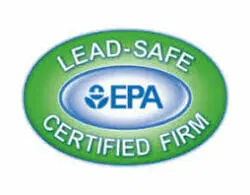The “nap” refers to the length and style of the material on a paint roller. When you buy a pack of rollers in a store for a DIY paint job, you will see that they have various lengths and other information to help you make the right decision. But if you haven’t used rollers very often before, you may not be sure what kind to buy. This simple guide will help you choose the right nap for your project! Let’s take a closer look at the specific nap lengths you can buy and the types of surfaces that they are made for.
3/16-inch or ¼-inch
These are usually the shortest naps available and tend to look very compact and flat. Naps like these are designed to spread paint very efficiently across surfaces, so less paint is used and the job goes faster. However, they’re only really effective for particularly flat surfaces. That includes untextured plaster, sanded wood that’s smooth to the touch, and drywall that isn’t too bumpy.
3/8-inch or ½-inch
These thicker naps are a better choice for surfaces that have a bit more texture, which means that very flat naps may not be able to get paint into all the little crevices, leading to unsightly mottled appearances. This longer nap can hold and apply more paint: While not as efficient, it’s excellent at making sure that slightly rough surfaces get a proper coating. That includes smooth concrete, most types of drywall, relatively flat wood, many types of acoustic tile, and so on.
If you are painting the interior of your home and aren’t sure what nap type to get, this is usually the best option for the average in-home drywall and similar surfaces.
¾-inch or 1-inch
Other surfaces may be rougher than usual, so that even average-sized nap lengths can have trouble getting into every surface, even with a second pass. For these surfaces, a longer nap length is usually required for effective work. These lengths are perfect for surfaces like textured plaster, which can look beautiful but also has sharper edges and contours that need a longer nap. It’s also a good choice for bumpy stucco, rougher concrete, and woods that haven’t been sanded down for interiors, like decks or fences.
1 ¼-inch or 1 ½-inch
These are very long naps that are easy to recognize because they are so larger. Generally, these naps are only used in very special cases. Otherwise, they soak up too much paint and make too much of a mess for the typical painting project. But there are some cases when a very rough surface needs to be painted, and that’s where these naps can help. One example is brick, which contains many deep indentations that must also be painted. As you can imagine, most of the surfaces fit for these naps are exteriors made from rough materials.
Still unsure what type of nap or other equipment that you may need for your painting project? Don’t worry, give Tar Heel Painters a call!
The post Paint Roller Naps – Which One Should I Use? appeared first on Tar Heel Painters.





